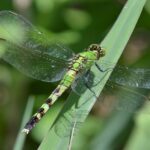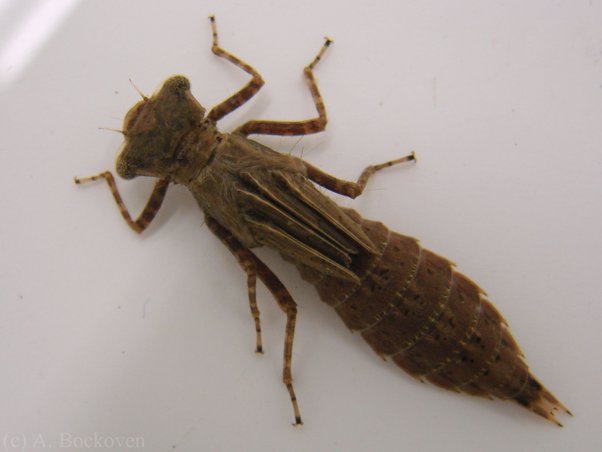
Introducing Dragonfly Nymphs: A Closer Look at the Early Stages of these Magnificent Insects
Dragonfly larvae (nymphs) are aquatic, usually drab, with 6 legs, large eyes, and small wing buds on the back of the thorax. Gills are located inside the rectum (unlike those of damselflies, which extend from the hind end like 3 leaflike tails). They breathe by drawing water in and out of their hind end. By forcefully expelling this water, the animal can move quickly in a form of jet propulsion. The lower jaw is scooplike and covers most of the bottom part of the head.
Appearance and Characteristics of Dragonfly Babies: Unveiling the Unique Features of Nymphs
A tiny tadpole-like prolarva emerges from the egg. If the egg is laid above water, the prolarva wriggles to safety as soon as it hatches and moults within a few hours. Prolarvae that hatch below water moult almost immediately.
Dragonflies spend most of their lives in their larval stage. During its time the dragonfly catches and eats live prey at every opportunity, moulting a further 5–14 times until it is fully-grown. Larval development typically takes one or two years, but ranges from 2–3 months (emerald damselflies) to more than five years (Golden-ringed Dragonfly). Development takes longer in cooler waters where food is scarcer, whilst in warm waters there may be a new generation every year.
Damselfly larvae can be separated from Dragonfly larvae by their caudal lamellae, which are fin-like structures at the end of their abdomen that act as external gills.
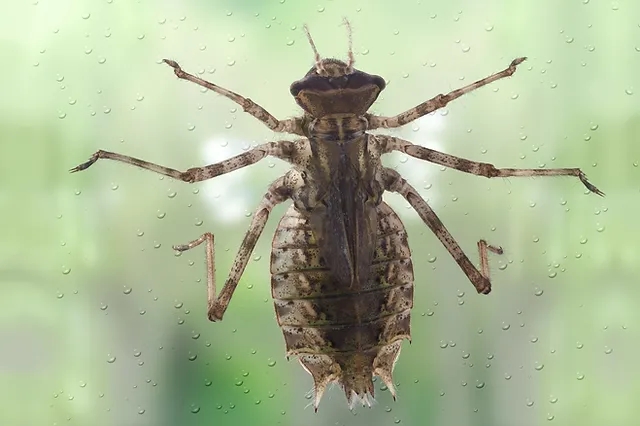
All dragonfly larvae have six legs (as do adults), wing-sheaths, an extendable hinged jaw (labium) that can shoot out in an instant and catch prey. Prey includes insect larvae, crustaceans, worms, snails, leeches, tadpoles and small fish. Dragonfly larvae themselves can fall victim to predators, including other dragonfly larvae, fish and waterfowl.
The larvae of some species are covered in hairs that collect silt or organic debris from the soft sediment within which they live. Others are coloured green and/or brown, which helps to provide camouflage amongst the submerged plants and algae they inhabit. Species living in bottom sediments have relatively poor eyesight, but instead use their hairs, long legs and antennae to sense prey. By contrast, hawkers have large eyes and hunt by sight amongst plants nearer the surface.
Nurturing Nature’s Wonders: Understanding the Importance and Role of Dragonfly Babies in Ecosystems
ecological significance of dragonfly nymphs, role in aquatic habitats, importance for biodiversity
The fascinating world of dragonflies and their importance to ecosystems
You’re basking in the day’s rays and exploring an interpretive trail.
It’s all picture perfect until you hear that telltale buzz and feel an all-too-familiar pain on your scalp.
The Deer Flies have arrived.
Swatting at the growing swarm, you look to the sky and wonder: will there be no relief?
And then they arrive. The prehistoric predator. The Deer Fly devourer. The people’s champion.
Dragonflies.
We often only catch brief glimpses of dragonflies as they zip around, at speeds of upwards of 55 km per hour, hunting for insects. But there is so much more to their incredible lives than just hunting that most people never know about.
Believe it or not, of the roughly 7,000 species of dragonflies in the world today, about 130 are found in Ontario. Each species has its own distinct colour and patterns, niches, and behaviours.
But that’s only the start of what makes dragonflies so incredible!
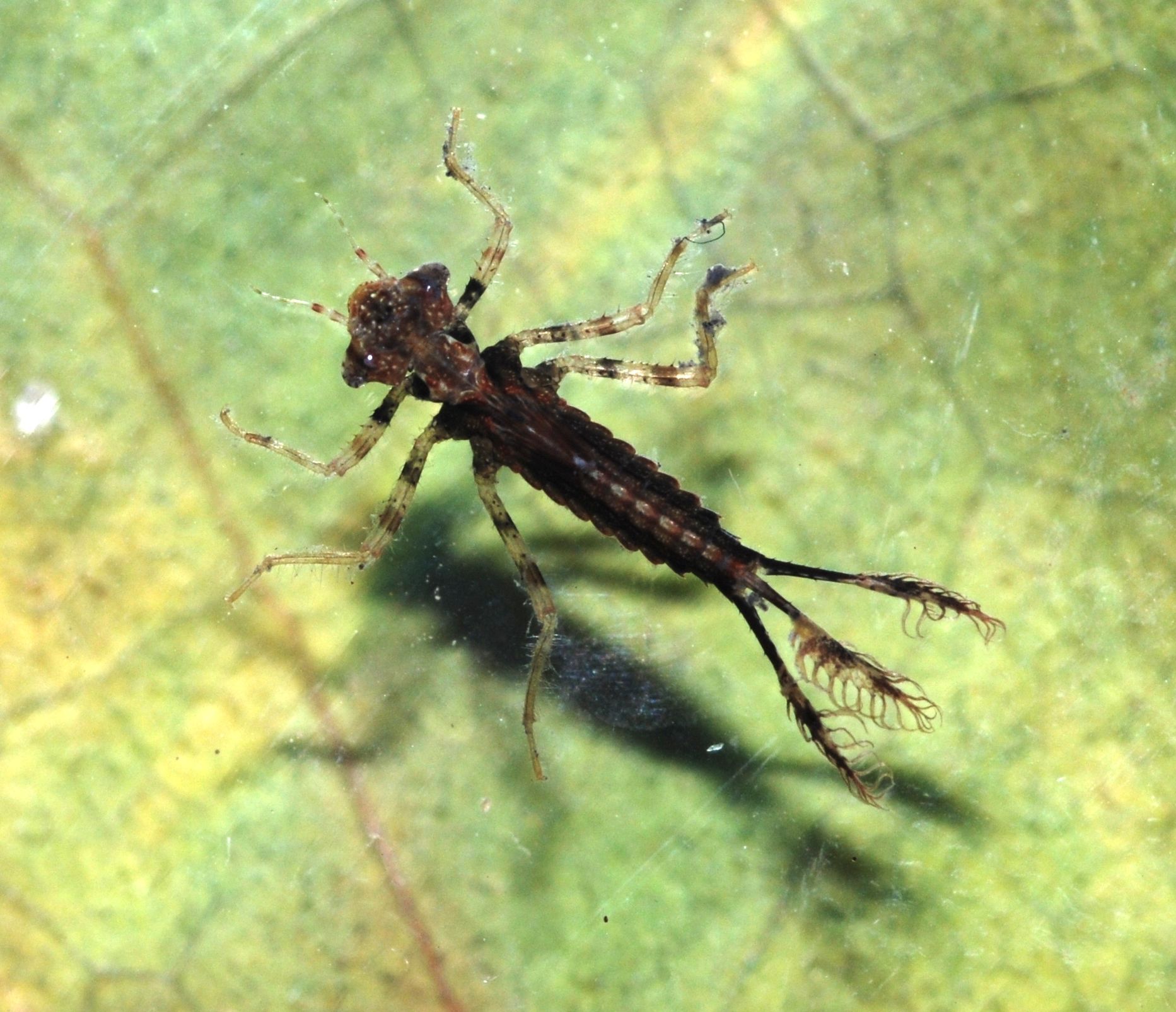
Know the difference: dragonfly versus damselfly
Dragonflies are part of the family Odonata (meaning “toothed ones”, as they have large, toothed mandibles), which comprises both dragonflies and damselflies. Odonata insects have been around for 325 million years!
While there are family similarities between dragonflies and damselflies, there are key features that set them apart. Dragonflies have a relatively stout body, and, by comparison, damselflies bodies are slender.
The easiest way to tell them apart, however, is when they are perched. Sitting dragonflies’ wings are extended to each side of the body, while sitting damselflies fold up their wings and hold them above their body.
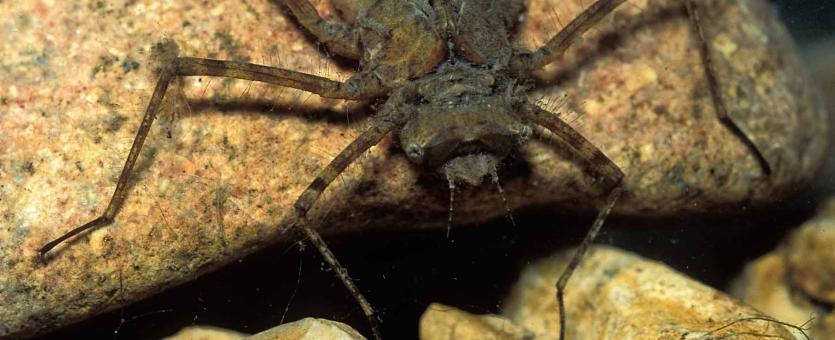
In the beginning: life underwater
Dragonflies have a fascinating life journey. While we think of them as zipping around the sky, they actually spend the majority of their lives underwater in their larval stage.
When laying their eggs, adult females will hover over water until they find the perfect spot, then begin to continuously dip the tip of their abdomens into the water to release the eggs. Once the eggs hatch, the larvae can take two to six years before turning into an adult!
During the larval stage, baby dragonflies molt between six and 15 times. To fuel this process, dragonflies subsist on other aquatic invertebrates, larvae and sometimes even tiny fish! They do this with an extendable jaw, which they can shoot out at lightning speed to capture their prey.
Not only do they have a unique way of catching food, but their quick movements through water are also unique. Dragonfly larvae have gills that line their rectum, and pump water through them.
When they need to move quickly, they blast out pressurized water from the end of their gut, propelling them through the water at rapid speeds. They use this tactic both to hunt prey and to avoid becoming dinner for larger predators like fish and frogs.
From larvae to adult
When a dragonfly nymph is finally ready to turn into an adult, the nymph will crawl out of the water onto land, molt out of its old skin (known as exuviae) and emerge as a fresh, winged adult.
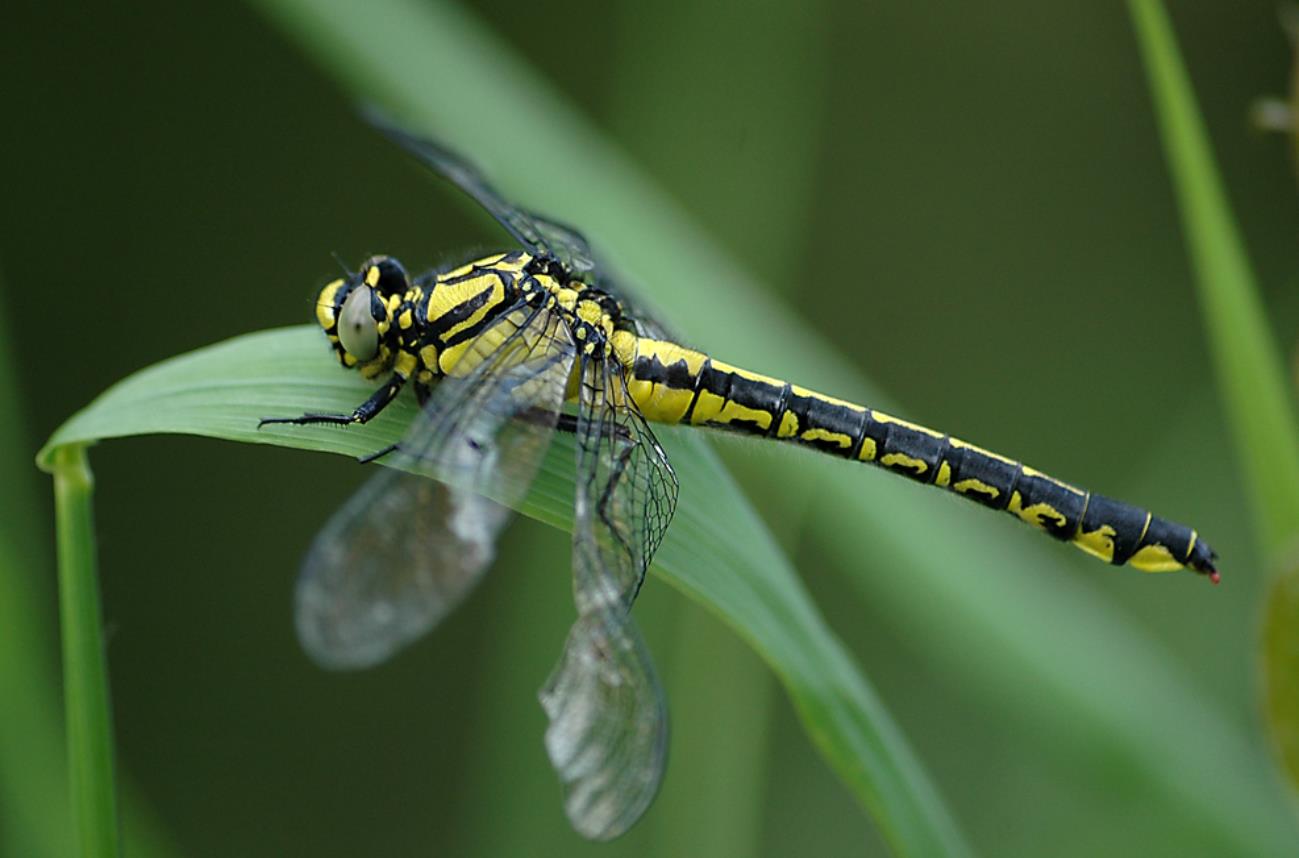
Dragonflies are ecologically important!
Dragonflies aren’t just fascinating for their life cycle and their flying style. They are important to their ecosystems and are valuable environmental indicators, as they rely on healthy aquatic ecosystems and food chains.
Changes in these insects’ population can help reveal changes in water ecosystems.
They are a top predator in the insect world and, as such, play a significant role in controlling the insect population — in particular biting insects and agricultural pests.




